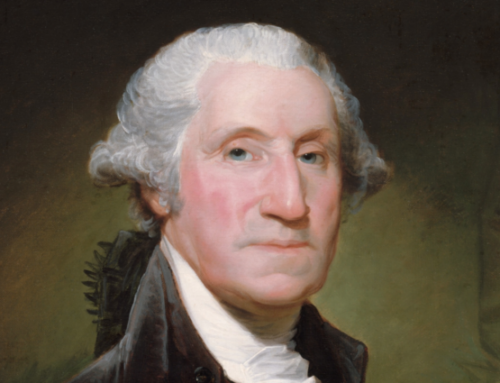 In the potentially momentous case considering the issue of “political gerrymandering,” the Supreme Court last week spent almost no time discussing and demanding that the litigating parties address the language of the Constitution.
In the potentially momentous case considering the issue of “political gerrymandering,” the Supreme Court last week spent almost no time discussing and demanding that the litigating parties address the language of the Constitution.
In Gill v. Whitford, Wisconsin Democrats had won a 2-1 ruling of a three-judge federal district court that the 2010 re-apportionment plan enacted by the Republican-dominated Wisconsin legislature had discriminated to an extreme against the Wisconsin Democratic party. In the words of those Democratic plaintiffs: “Wisconsin’s Assembly [the state House], however, bears no resemblance to its evenly split electorate. In 2012, Republicans won a supermajority of sixty seats (out of ninety-nine) while losing the statewide vote. In 2014 and 2016, Republicans extended their advantage to sixty-three and sixty-four seats, respectively, even though the statewide vote remained nearly tied.”
Two Prior Decisions
There had been two previous attempts to constitutionalize partisan/political gerrymandering—as distinct from racial gerrymandering. In Davis v. Bandemer (1986), a suit by Indiana Democrats, a majority of the Court agreed that the case presented a bona-fide question under the Equal Protection Clause of the Fourteenth Amendment, but those same justices joined the dissent in agreeing that they could discern no standard for measuring or deciding the issue. In Vieth v. Jubelirer (2004), a suit by Pennsylvania Democrats, four justices, led by Justice Scalia, argued that Bandemer should be overruled because partisan/political gerrymandering was one of the “political questions” that could not be heard and resolved by the federal courts. The four also reiterated the holding of Bandemer that there was no workable judicial standard by which courts could proceed. But Justice Kennedy, the fifth vote rejecting the particular claim of the Pennsylvania Democrats, concluded that it may still be possible to come up with new statistical and computer-based methods of examining voting results that would enable a court to decide such a case. He said that computer-assisted technology “may produce new methods of analysis that make more evident the precise nature of the burdens gerrymandering imposes on the representational rights of voters and parties.” And referring to what he called the rights underlying “ideology, beliefs, or political association,” Justice Kennedy also proposed to substitute the First for the Fourteenth Amendment as the constitutional basis for a political gerrymandering claim.
The First Amendment
Gill v. Whitford, the case heard on appeal to the Court last week, was carefully designed to appeal to Justice Anthony Kennedy’s opinion in Vieth. At the beginning of oral argument, Justice Kennedy immediately set the tone by asking the attorney defending Wisconsin’s reapportionment whether “this is a First Amendment issue, not an equal protection issue.” In a later section of the oral argument, the attorney for the plaintiff Democrats, argued that “it’s a First Amendment claim and equal protection claim.” He quoted directly from Kennedy’s Vieth opinion, to wit, “First Amendment concerns arise where a state enacts a law that has the purpose and effect of subjecting a group of voters or their party to disfavored treatment by reason of their views. In the context of partisan gerrymandering, that means that First Amendment concerns arise where an apportionment has the purpose and effect of burdening a group of voters’ representational rights.”*
“Metrics” and the New “World of Voting Technology”
As for responding to Justice Kennedy’s stated expectation in Vieth for the development of a technological breakthrough, Wisconsin Democratic plaintiffs had presented to the district court at the trial level a “new method of analysis,” developed by a social scientist. This “efficiency gap,” as it is called, compares the statewide total of “wasted votes” of both political parties and then comes with a differential percentage that supposedly measures whether unfair gerrymandering has occurred. Statewide “wasted” votes are each party’s votes in a losing voting district added to the party’s excess votes over a majority in a winning voting district. The Wisconsin Democratic plaintiffs had proposed and the district court had accepted that a differential percentage of seven percent indicated unacceptable political gerrymandering.
At oral argument, Justices Kennedy, Stephen Breyer, Ruth Bader Ginsburg, Sonia Sotomayor, and Elena Kagan all essentially accepted this measure and used it, along with the related theme of “partisan asymmetry” to sharply question the lawyers defending the Wisconsin plan. Justice Kagan opined that if the new “world of voting technology” can be used to establish a malapportioned legislature, as it was by the Republican-controlled Wisconsin legislature, it can also be used to disestablish it. Justice Sotomayor said that “every single social science metric [in the case] points in the same direction:” unfair gerrymandering. And Justice Ginsburg maintained that according to the plan drawn up by the Wisconsin legislature that “the precious right to vote” had been sacrificed to a “result [that] is preordained in most of the districts.”
Chief Justice Roberts wondered why an efficiency gap of seven percent was an accurate measure and opined that the concept of the efficient gap itself did not “sound like language in the Constitution.” Justice Samuel Alito, worried that the public will not be able to understand a “constitutional standard” based on technology and will consequently attribute the Court’s decision on this subject to which president appointed which justices. And Justice Gorsuch, referring to that “arcane matter, the Constitution,” worried that if the Court were to decide in favor of the Wisconsin Democrats that no state could avoid “having every district and every case and every election subject to litigation.”
Overall, it can be seen that oral argument was almost exclusively about the statistical measure to be used as the basis for deciding a constitutional violation. But in a case that concerned the bedrock principle and act of democracy, voting, there was almost no discussion of or an attempt to enunciate the constitutional standard itself. In neither oral argument nor in the briefs of the plaintiffs was any effort made to develop the unprecedented claim that the First Amendment governs voting behavior. Is it freedom of speech, freedom of association?
It appears that five members of the Court agree that Justice Kennedy’s hope that “new methods of analysis” would enable the federal courts to measure the degree of unfairness of political gerrymandering has now been realized. If so, then voting will become still another area of American society controlled by data.
*See the full text of Gill v. Whitford here. Books on the topic of this essay may be found in The Imaginative Conservative Bookstore. The Imaginative Conservative applies the principle of appreciation to the discussion of culture and politics—we approach dialogue with magnanimity rather than with mere civility. Will you help us remain a refreshing oasis in the increasingly contentious arena of modern discourse? Please consider donating now.







Leave A Comment